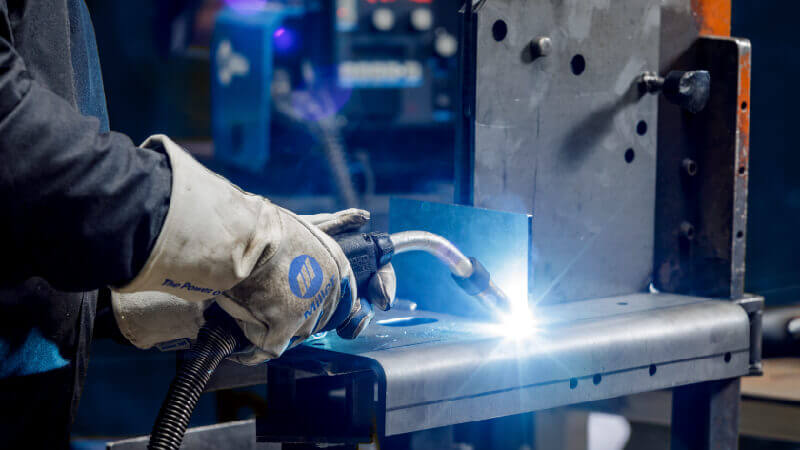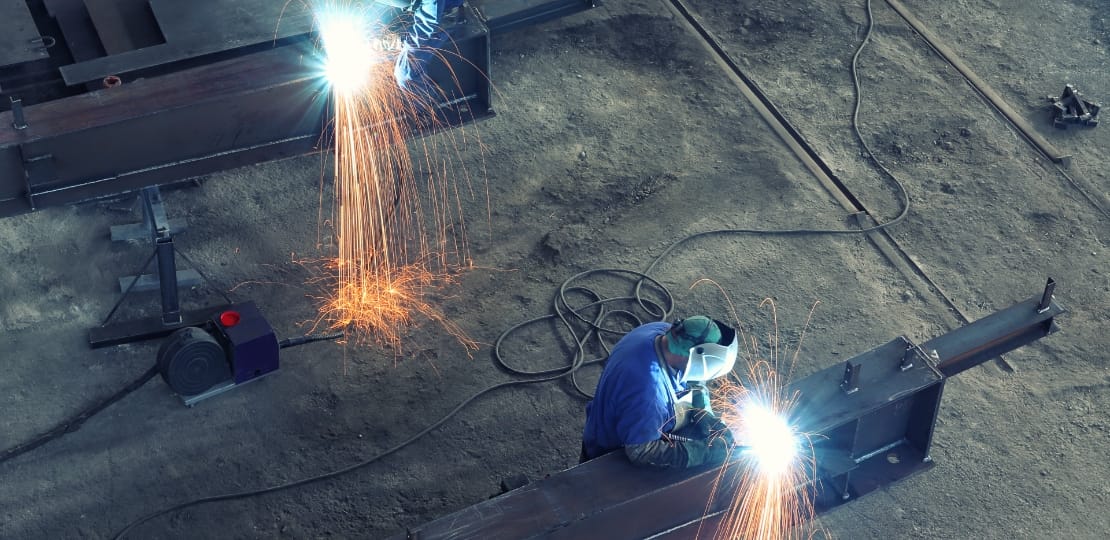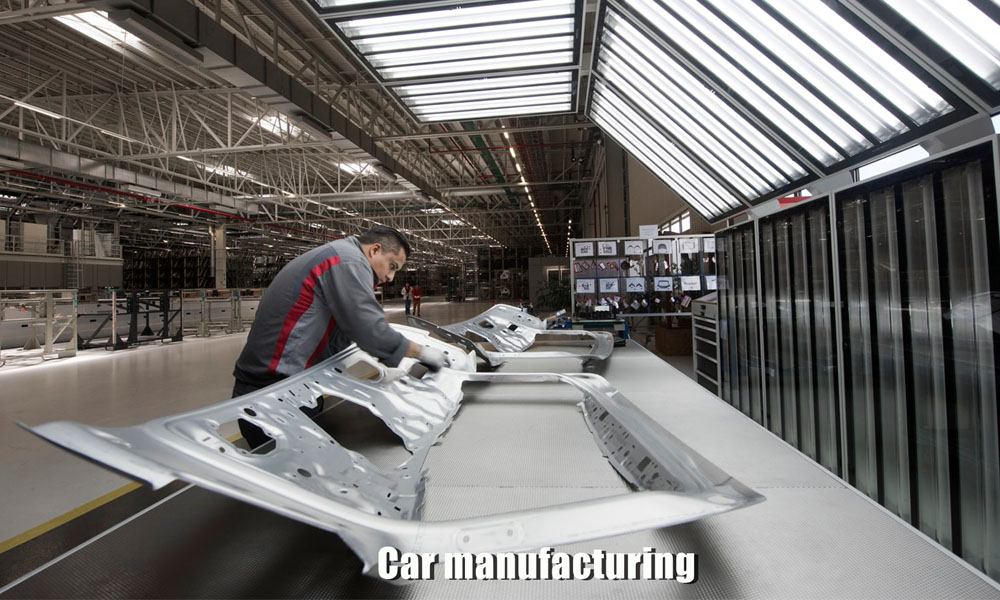Usual Welding Fixing Issues and How to Address Them Effectively
Welding fixings typically come across a variety of concerns that can jeopardize the stability of the end product. Common issues include inadequate penetration, porosity, and misalignment, among others. Each problem offers one-of-a-kind difficulties that need details approaches for resolution. Understanding these concerns is necessary for welders intending to boost their results and skills. This discussion will discover these typical welding fixing issues and reliable methods to address them.
Insufficient Infiltration
Poor penetration takes place when the weld steel fails to totally fuse with the base product, resulting in weak joints and prospective structural failures. This issue commonly originates from not enough warm input, incorrect electrode angle, or incorrect welding speed. Welders may run into poor infiltration due to a mistake of the required specifications for a particular material density or kind. Additionally, contamination on the base product's surface can hinder efficient bonding, intensifying the issue. To address insufficient infiltration, welders ought to ensure proper settings on their equipment and preserve a tidy job surface area. Regular examination of welds is suggested to determine any kind of deficiencies early, enabling prompt corrections and the avoidance of jeopardized architectural integrity in bonded settings up.
Porosity
Porosity is a common defect in bonded joints that shows up as small gas bubbles entraped within the weld metal. This issue can jeopardize the honesty of the weld, causing lowered strength and prospective failure under stress. Belgrade Welding. Porosity commonly develops from contamination, dampness, or improper welding strategies, which enable gases to get away right into the molten weld pool. To attend to porosity, welders ought to ensure appropriate surface area prep work, keep a clean workplace, and make use of suitable welding parameters. Additionally, picking the ideal filler product and shielding gas can alleviate gas entrapment. Regular evaluation and testing of welds can help recognize porosity early, guaranteeing timely rehabilitative activities are taken, thus preserving the quality and dependability of the bonded framework
Imbalance
Imbalance in welding can arise from numerous aspects, including inappropriate arrangement and thermal development. Comprehending the source is vital for efficient resolution. Several improvement strategies are available to straighten parts and assure architectural integrity.
Root causes of Misalignment
Welding misalignment frequently originates from a selection of underlying concerns that can compromise architectural honesty. One main cause is incorrect fit-up of components before welding, which can cause voids and irregular surfaces. Variants in thermal growth during the welding process can also lead to distortion, particularly if the products being joined have different coefficients of growth. In addition, inadequate fixturing and securing may fall short to hold elements safely in location, causing activity throughout welding. Badly kept equipment, consisting of welding equipments and tools, might present disparities in the weld grain, more adding to misalignment. Operator mistake, stemming from inadequate training or experience, can also play a substantial function in developing misaligned welds.

Improvement Strategies Available
Resolving imbalance effectively needs a combination of corrective methods customized to the particular concerns available. One common method is the usage of components or jigs to hold elements in the appropriate setting throughout welding, guaranteeing constant placement. Furthermore, pre-heating the materials can help in reducing distortion and boost fit-up. For significant misalignment, mechanical adjustment strategies, such as utilizing hydraulic jacks or clamps, can be utilized to remedy the setting before welding. Post-weld warm treatment may additionally be essential to alleviate anxieties triggered by misalignment. Finally, mindful inspection and adjustment throughout the setup stage can avoid imbalance concerns from coming to be significant issues, advertising a smoother welding process and improving general structural stability.
Distortion
Distortion is a common challenge in welding that can occur from numerous aspects, including uneven heating & cooling. Recognizing the reasons for distortion is crucial for implementing efficient avoidance techniques. Resolving this problem not just improves architectural honesty yet also boosts the total quality of the weld.
Reasons for Distortion
When based on the intense warmth of welding, products usually go through adjustments that can cause distortion. This phenomenon mostly occurs from thermal development and contraction throughout the welding procedure. As the weld location heats up, the material increases; upon cooling, it contracts, which can produce interior stress and anxieties. Additionally, uneven heating across a workpiece can intensify these stresses, resulting in bending or flexing. The sort of product also plays a substantial function; metals with varying thermal conductivity and coefficients of growth may react in different ways, leading to unpredictable distortions. Bad joint style and poor fixturing can add to imbalance throughout welding, boosting the likelihood of distortion. Understanding these reasons is essential for effective welding repair work and prevention strategies.
Avoidance Techniques
Efficient avoidance methods for distortion throughout welding concentrate on regulating warmth input and ensuring correct joint design. Keeping a regular heat input aids to decrease thermal expansion and contraction, which can bring about distortion. Making use of methods such as pre-heating the work surface can likewise reduce the temperature level slope, promoting consistent heating. Additionally, choosing ideal joint layouts, such as T-joints or lap joints, can improve security and minimize stress concentrations. Carrying out proper fixturing to safeguard the workpieces in location even more help in maintaining alignment throughout the welding procedure. Ultimately, staggered welding series can distribute warm a lot more equally, stopping local distortion. By using these methods, welders can considerably reduce the probability of distortion and improve the total top quality of their welds.
Splitting
Fracturing is a typical issue run into in welding repairs, usually resulting from various variables such as incorrect cooling prices, material choice, or insufficient joint preparation. The incident of splits can greatly endanger the honesty of the weld, causing prospective failings throughout procedure. To address this problem, welders need to first analyze the origin creates, making sure that materials work and properly selected for the specific application. In addition, managing the air conditioning price during the welding procedure is important; quick air conditioning can generate anxiety and bring about breaking. Appropriate joint style and prep work additionally add to minimizing the risk. Executing these approaches can improve weld top quality and longevity, eventually decreasing the probability of breaking in completed weldments.

Insufficient Combination
A substantial issue in welding fixings is incomplete blend, which takes place when the weld metal does not effectively bond with click here for info the base material or previous weld passes - Fabrication. This defect can bring about weak points in the joint, potentially jeopardizing the integrity of the bonded framework. Aspects adding to incomplete blend include not enough warm input, incorrect welding strategy, and contamination of the surfaces being signed up with. To address this concern efficiently, welders ought to guarantee proper pre-weld cleaning and surface area prep work, along with readjust their welding parameters to achieve sufficient infiltration and blend. Routine inspection during the welding procedure can also aid recognize insufficient combination early, enabling prompt corrective measures to boost the overall top quality of the weld
Overheating
While welding repairs can improve structural honesty, overheating presents a substantial obstacle that can bring about product destruction. Too much warm throughout welding can change the mechanical homes of metals, leading to lowered toughness, boosted brittleness, and warping. This phenomenon is particularly crucial in high-stress applications where structural integrity is vital. Determining overheating can entail visual examinations for discoloration or distortion, in addition to monitoring temperature level during the welding procedure. To alleviate the threats related to getting too hot, welders should use suitable techniques, such as regulating warmth input, readjusting travel rate, and utilizing appropriate filler materials. In addition, implementing pre- and post-weld warmth treatments can assist recover product residential or commercial properties and boost the total high quality of the repair, making sure long-lasting efficiency and security.
Frequently Asked Inquiries
What Are the Usual Indicators of a Welding Problem?

Just How Can I Examine My Welds for Quality?
To examine welds for quality, one can utilize visual inspections, ultrasonic testing, and radiographic methods. Each method ensures structural honesty, determines issues, and validates adherence to specified requirements, ultimately improving the dependability of the welded joints.
What Safety and security Preventative Measures Should I Take While Welding?
When welding, one must focus on safety and security by using ideal individual protective devices, guaranteeing appropriate ventilation, protecting combustible products away, maintaining a clean work area, and recognizing surroundings to stop injuries and mishaps.
Can I Repair a Weld Without Redoing the Entire Joint?
Fixing a weld without remodeling the whole joint is possible, relying on the damages (Montana Mobile Welding and Repair Fabrication). Strategies such as grinding, adding filler product, or utilizing a welding official site procedure can properly address certain defects while preserving the surrounding framework
What Tools Are Vital for Reliable Welding Fixes?
Crucial devices for reliable welding repair services consist of a welding equipment, cable brush, grinder, safety equipment, clamps, and filler materials. Each device plays an important function in making sure high quality and safety during the repair service procedure. Porosity commonly occurs from contamination, wetness, or inappropriate welding techniques, which allow gases to get away into the molten weld swimming pool. Inadequately maintained devices, including welding devices and tools, might introduce variances in the weld grain, further adding to imbalance. When subjected to the extreme warmth of welding, materials commonly undertake modifications that can lead to distortion. Fracturing is an usual view website concern come across in welding fixings, usually resulting from numerous variables such as improper cooling prices, material selection, or insufficient joint prep work. A substantial problem in welding repair work is insufficient combination, which occurs when the weld metal does not adequately bond with the base product or previous weld passes.